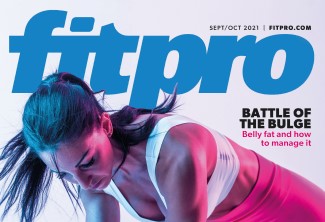Magazine References
Sep – Oct 2021

Pg 6-7 How much exercise is enough?
References
- Kyu H et al (2016), Physical activity and risk of breast cancer, colon cancer, diabetes, ischemic heart disease, and ischemic stroke events: systematic review and dose-response meta-analysis for the Global Burden of Disease Study, BMJ, 354: i3857. doi: https://doi.org/10.1136/bmj.i3857, accessed on 27 July 2021.
- Bull F et al (2020), World Health Organization 2020 guidelines on physical activity and sedentary behaviour, Br J Sports Med., 54: 1,451-62. https://doi.org/10.1136/bjsports2020-102955, accessed on 27 July 2021.
- Dunstan D et al, Sit less and move more for cardiovascular health: emerging insights and opportunities, https://doi.org/10.1038/s41569-021-00547-y, accessed on 27 July 2021.
- Ekelund U et al (2016), Does physical activity attenuate, or even eliminate, the detrimental association of sitting time with mortality? A harmonised meta-analysis of data from more than 1 million men and women, The Lancet, 388: s. 1,302-10.
- Hall et al (2020), Systematic review of the prospective association of daily step counts with risk of mortality, cardiovascular disease, and dysglycemia, International Journal of Behavioral Nutrition and Physical Activity, 17:7. https://doi.org/10.1186/s12966-020-00978-9, accessed on 27 July 2021.
Pg 10-11 Postnatal return to running
References
- Thompson JA & O’Sullivan PB (2003), Levator plate movement during voluntary pelvic floor muscle contraction in subjects with incontinence and prolapse: a cross-sectional study and review, International Urogynecology Journal and Pelvic Floor Dysfunction, 14(2): 84-88.
- Sapsford R, Richardson CA and Stanton WR (2006), Sitting posture affects pelvic floor muscle activity in parous women: an observational study, The Australian Journal of Physiotherapy, 52(3): 219-22.
Pg 13-15 Visceral fat: What it is and how to get rid of it
References
- Tchernof A (2015), Pathophysiology of human visceral obesity: an update, Am Coll Nutr. Suppl., 1: 14-21.
- Ohlson LO, Larsson B, Svardsudd K et al (1985), The influence of body fat distribution on the incidence of diabetes mellitus. 13.5 years of follow-up of the participants in the study of men born in 1913, Diabetes, 34: 1,055-8.
- Sanne P et al (2018), Sex differences in the association between measures of general and central adiposity and the risk of myocardial infarction. Results from the UK Biobank, Journal of the American Heart Association, 7(5).
- Vague J (1947), La differentiation sexuelle. Facteur determinant des formes de l’obesit, Press Med., 30: 339-40.
- Satvinder S (2009), Measurement error and ethnic comparisons of measures of abdominal obesity, Eur J Clin Nutr., 49(2-3): 148-52.
- Seidell J (2007), Waist circumference and waist/hip ratio in relation to all-cause mortality, cancer and sleep apnea, Eur Heart J., 28(7): 850-6.
- Koning L (2007), Waist circumference and waist-to-hip ratio as predictors of cardiovascular events: meta-regression analysis or prospective studies, Epidemiol Rev., 29: 115-28.
- Vazquez G (2013), Comparison of body mass index, waist circumference and waist/hip ratio in predicting incident diabetes: a meta-analysis, Physiol. Rev., 93(1): 359-404.
- Goss et al (2013), Effects of diet macronutrient composition on body composition and fat distribution during weight maintenance and weight loss, Obesity, 21(6): 1,138-42.
- Volek J et al (2004), Comparison of energy-restricted very low carbohydrate and low fat diets on weight loss and body composition in overweight men and women, Nutr. Metab., 8:1:13.
- Vispute S (2011), The effect of abdominal exercise on abdominal fat, Journal of Strength and Conditioning Research, 25(9).
- Visser D (2013), The effect of exercise on visceral adipose tissue in overweight adults: a systematic review and meta-analysis, PLoS., 8(2): 56415.
- Chaput J (2014), Change in sleep duration and visceral fat accumulation over 6 years in adults, Obesity, 22(5): E9-12.
- Epel S et al (2000), Stress and body shape: a stress-induced cortisol secretion is consistently greater among women with central fat, Psychosom. Med., 62(5): 623-32.
Pg 18-19 Top 10 vagus nerve hacks cuff injuries
References
- Lv H, Zhao Y, Chen J, Wang D, Chen H (2019), Vagus nerve stimulation for depression: A systematic review, Frontiers in Psychology, 10. doi: https://doi.org/10.3389/fpsyg.2019.00064, accessed on 1 July 2021.
- Thayer JF (2009), Vagal tone and the inflammatory reflex, Cleveland Clinic Journal of Medicine, 76(4 suppl 2): S23–S26. doi: https://doi.org/10.3949/ccjm.76.s2.05, accessed on 1 July 2021.
- Porges SW (2011),The Polyvagal Theory: Neurophysiological Foundations of Emotions, Attachment, Communication, and Self-regulation (Norton Series on Interpersonal Neurobiology), W. W. Norton & Company.
- Rosenberg S (2017), Accessing the Healing Power of the Vagus Nerve: Self-Help Exercises for Anxiety, Depression, Trauma, and Autism, North Atlantic Books.
- Jungmann M, Vencatachellum S, Van Ryckeghem D, Vögele C (2018), Effects of cold stimulation on cardiac-vagal activation in healthy participants: Randomized controlled trial, JMIR Formative Research, 2(2): e10257. doi: https://doi.org/10.2196/10257, accessed on 1 July 2021.
- Gerritsen RJS, Band GPH (2018), Breath of life: The respiratory vagal stimulation model of contemplative activity, Frontiers in Human Neuroscience, 12. doi: https://doi.org/10.3389/fnhum.2018.00397, accessed on 1 July 2021.
- Breit S, Kupferberg A, Rogler G, Hasler G (2018), Vagus nerve as modulator of the brain–gut axis in psychiatric and inflammatory disorders, Frontiers in Psychiatry, 9. doi: https://doi.org/10.3389/fpsyt.2018.00044, accessed on 1 July 2021.
- Wang H, Lee IS, Braun C, Enck P (2016), Effect of probiotics on central nervous system functions in animals and humans: A systematic review, Journal of Neurogastroenterology and Motility, 22(4): 589-605. doi: https://doi.org/10.5056/jnm16018, accessed on 1 July 2021.
- Field T (2016), Massage therapy research review, Complementary Therapies in Clinical Practice, 24: 19-31. doi: https://doi.org/10.1016/j.ctcp.2016.04.005, accessed on 1 July 2021.
- Paciorek A, Skora L (2020), Vagus nerve stimulation as a gateway to interoception, Frontiers in Psychology, 11. doi: https://doi.org/10.3389/fpsyg.2020.01659, accessed on 1 July 2021.
- Bordoni B, Marelli F (2017), Emotions in motion: Myofascial interoception, Complementary Medicine Research, 24(2): 110-113. doi: https://doi.org/10.1159/000464149, accessed on 1 July 2021.
- Kok BE, Coffey KA, Cohn MA, Catalino LI, Vacharkulksemsuk T, Algoe SB, Brantley M, Fredrickson BL (2013), How positive emotions build physical health, Psychological Science, 24(7): 1,123-32. doi: https://doi.org/10.1177/0956797612470827, accessed on 1 July 2021.
Pg 20-22 Introducing plyometrics for the strength and conditioning trainer
References
- Maffiuletti NA, Aagaard P, Blazevich AJ, Folland J, Tillin N, Duchateau J (2016), Rate of force development: physiological and methodological considerations, European journal of applied physiology, 116(6): 1,091-116.
- Newton RU (1997), Expression and development of maximal muscle power, Southern Cross University.
- Hornsby WG, Gentles JA, MacDonald CJ, Mizuguchi S, Ramsey MW, Stone MH (2017), Maximum strength, rate of force development, jump height, and peak power alterations in weightlifters across five months of training, Sports, 5(4): 78.
- Taber C, Bellon C, Abbott H, Bingham GE (2016), Roles of maximal strength and rate of force development in maximising muscular power, Strength & Conditioning Journal, 38(1): 71-8.
- Suchomel TJ, Nimphius S, Bellon CR, Stone MH (2018), The importance of muscular strength: Training considerations, Sports Medicine, 48(4): 765-85.
- Oliveira FB, Oliveira AS, Rizatto GF, Denadai BS (2013), Resistance training for explosive and maximal strength: effects on early and late rate of force development, Journal of Sports Science & Medicine, 12(3): 402.
- Haff GG, Nimphius S (2012), Training principles for power, Strength & Conditioning Journal, 34(6): 2-12.
- Weiss LW, Fry AC, Relyea GE (2002), Explosive strength deficit as a predictor of vertical jumping performance, Journal of Strength and Conditioning Research, 16(1): 83-6.
- Jeffreys I, Moody J, editors (2021), Strength and Conditioning for Sports Performance, Routledge.
- Haff GG, Triplett NT, editors (2015), Essentials of Strength Training and Conditioning, 4th edition, Human kinetics
Pg 24-25 Grip it and rip it: Shoulder injuries
References
- Chaconas EJ, Morey J, Kolber PT, Hanney WJ, Daugherty ML, Wilson SH, Sheets C (2017), Shoulder external rotator eccentric training versus general shoulder exercise for subacromial pain syndrome: A randomized controlled trial, Int J Sports Phys Ther., 12(7): 1,121-33.
- Blume C, Wang-Price S, Trudelle-Jackson E, Ortiz A (2015), Comparison of eccentric and concentric exercise interventions in adults with subacromial impingement syndrome, Int J Sports Phys Ther., 10(4): 441-455.
- Horsley I, Herrington L, Hoyle R, Prescott E, Bellamy N (2016), Do changes in hand grip strength correlate with shoulder rotator cuff function? Shoulder Elbow, 8(2): 124–129.
- Sporrong H, Palmerud G, Herberts P (1996), Hand grip increases shoulder muscle activity, An EMG analysis with static hand contractions in 9 subjects, Orthop. Scand., 67(5): 485-90.
- Celis-Morales CA, Welsh P, Lyall DM (2018), Associations of grip strength with cardiovascular, respiratory, and cancer outcomes and all cause mortality: Prospective cohort study of half a million UK Biobank participants, BMJ, May 8.
- Bohannon RA (2019), Grip strength: An indispensable biomarker for older adults, Clin. Interv. Aging, 14: 1681-91.
Pg 30-33 How to help clients with their pain: A neurophysiological perspective
References
- Van der Kolk BA (2015), The Body Keeps the Score: Brain, Mind, and Body in the Healing of Trauma, New York: Viking.
- Gatchel R, Peng Y, Peters M, Fuchs P, Turk D (2007), The biopsychosocial approach to chronic pain: scientific advances and future directions, Psychological Bulletin, 133(4): 581-624.
- Santrock J (2016), A topical approach to lifespan development (8th ed.), New York: McGraw-Hill.
- Moseley GL, Butler DS (2015), 15 Years of explaining pain – The past, present and future, Journal of Pain, 16: 807–813.
- Porges S (2009), Stress and Parasympathetic Control, University of Illinois at Chicago, 463-469.
- Jerath R, Crawford M, Barnes V, Harden K (2015), Self-regulation of breathing as a primary treatment for anxiety, Springer Science Business Media New York.
- George S, Wittmer V, Fillingim R, Robinson M (2010), Comparison of graded exercise and graded exposure clinical outcomes for patients with chronic low back pain.
Further reading
References
- Kahneman D (2011), Thinking, Fast and Slow, Farrar, Straus and Giroux.
- Pelletier R, Higgins J, Bourbonnais D (2015), Is neuroplasticity in the central nervous system the missing link to our understanding of chronic musculoskeletal disorders? BMC Musculoskeletal Disorders, 16: 1-13.


